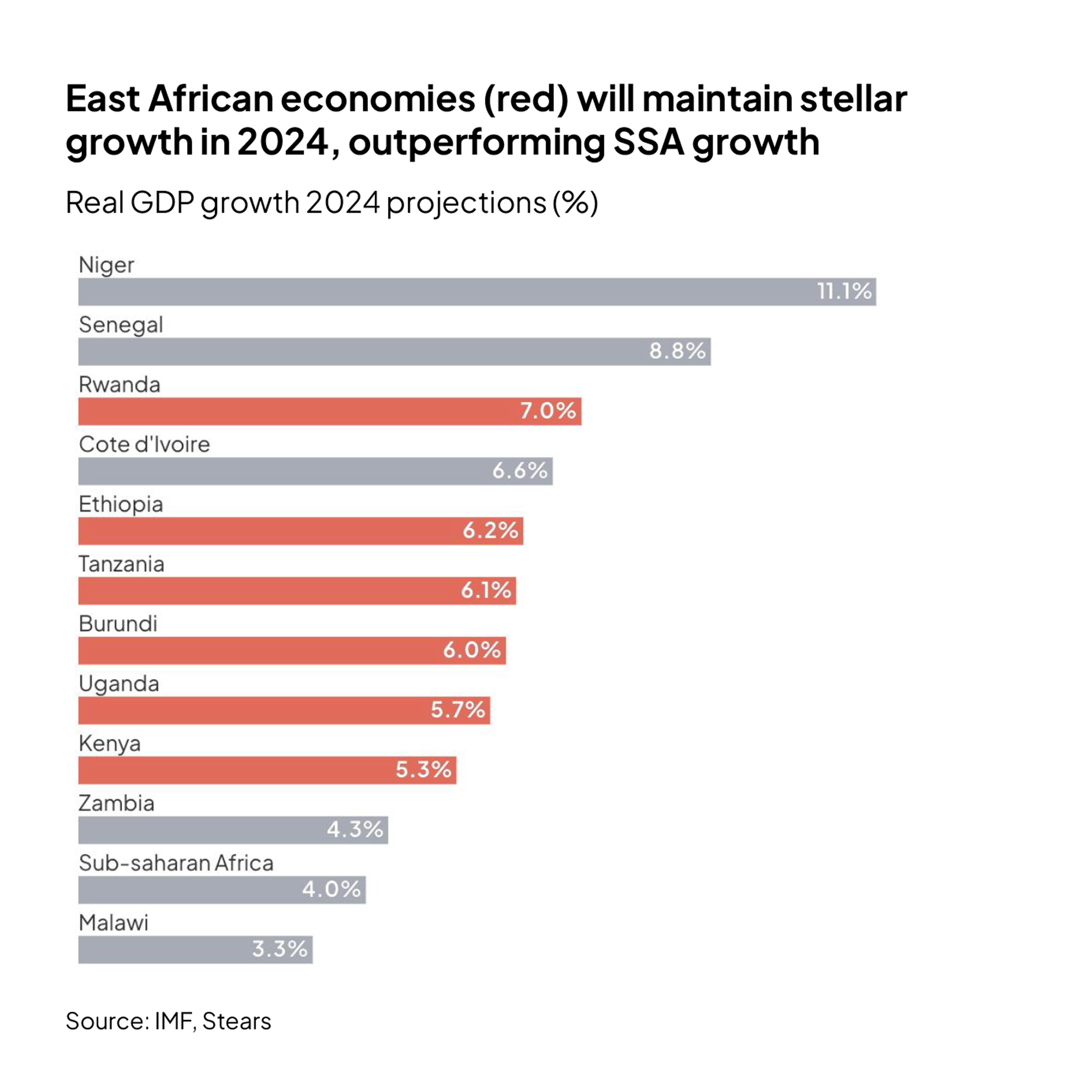- East Africa is set to outshine other regions in 2024 growth with Rwanda, Kenya, Tanzania and Uganda posting impressive numbers.
- This year, Africa’s overall growth is forecasted at 4 per cent, a notable increase from 3.3 per cent in 2023.
- These are findings of a new Africa 2024 outlook report by Stears, an economic analysis and data-driven insights provider.
The prevailing economic woes in Kenya are projected to continue in 2024 with persistent currency depreciation and inflationary pressures taking toll on individuals and businesses. This is according to a new Africa 2024 Outlook report by Stears, a Nigeria-based economic analysis and data-driven insights company.
Already, the latest statistics show that the Kenyan Shilling has already breached the 160 mark against the US dollar.
Stears’ 2024 Outlook delves into key African countries, specifically Kenya and the continent’s powerhouse Nigeria, projecting persisting economic challenges for both economies.
he macroeconomic analysis for Kenya anticipates persistent currency depreciation and inflationary pressures. The Africa 2024 Outlook Report highlights that inflation averaged 7.8 per cent in 2023, with a nuanced forecast ranging between 6 per cent and 7.4 per cent for 2024.
This projection aligns with the Central Bank of Kenya’s (CBK) target range of 5±2.5 per cent, reflecting a global trend targeting enhanced price stability.
Dumebi Oluwole, Senior Economist at Stears, underscores the significance of inflation as a barometer of economic health and advocates for the urgent need to address the persistent challenge of currency depreciation.
The report reveals a closer alignment of the Kenyan Shilling (KES) to its fair value, shedding light on the delicate balance between inflation dynamics and investor attractiveness.
Nevertheless, Kenya’s GDP per capita stands 30 per cent above the Sub-Saharan Africa average, signaling increased consumer spending and positioning the country as a significant market.
Africa 2024 Outlook, however, highlights the potential for further GDP per capita growth, primarily through improved job creation in high-value sectors like manufacturing and services.
The report identifies East African economies of Rwanda, Tanzania, Uganda, and Kenya as key drivers, noting that they’ll collectively contribute significantly to the region’s economic resurgence.
“East Africa’s growth is propelled by dynamic sectors such as natural resources, transportation, tourism, and agriculture. Significantly, there is potential for further acceleration due to increased investment from Gulf countries. These developments are shaping East Africa into a model region for economic resilience and diversification,” says Stears Head of Insights Fadekemi Abiru.
This year, Africa’s overall growth is forecasted at 4 per cent, a notable increase from 3.3 per cent in 2023, positioning it as the second-highest globally, trailing only Asia (4.8 per cent).
Contrary to broad generalisations, the report sheds light on the diverse growth trajectories across Africa, with East Africa emerging as a regional powerhouse.
Read also: Kenyan Shilling falls to all-time low as Fed rates take toll
Africa 2024 Outlook: Focus on Major Powerhouses
Notably, South Africa, Egypt, and Nigeria, considered economic giants, are poised for growth rates below the regional average, emphasising the importance of recognising and navigating the diverse economic landscapes that exist within the continent.
Simultaneously, the 2024 African Outlook Report delves into Nigeria’s macroeconomic landscape, revealing a formidable challenge in the form of a high headline inflation rate, currently at 28.2 per cent .
Stears projects an average annual inflation rate ranging from 27.59 per cent to 31.85 per cent for 2024, necessitating proactive measures for economic stability.

Strategic interventions to enhance liquidity
“The elimination of petrol subsidies has significantly heightened the cost of living for consumers, leading to an overall uptick in inflation. Coupled with the devaluation of the naira, this has precipitated higher exchange rates, complicating the economic landscape for both consumers and businesses,” Dumebi Oluwole explains,
Africa 2024 Outlook emphasises the need for strategic interventions to enhance liquidity and stabilise the exchange rate, highlighting the importance of collaborative initiatives between the government, regulatory bodies, and the private sector for sustained economic growth.
“Our Africa 2024 Outlook Report reflects Stears’ commitment to providing data-driven insights that transcend conventional narratives. As Africa navigates its course in the global economic landscape, understanding distinctive growth trajectories and leveraging regional strengths will be key,” said Yvette Dimiri, Director at Stears.











